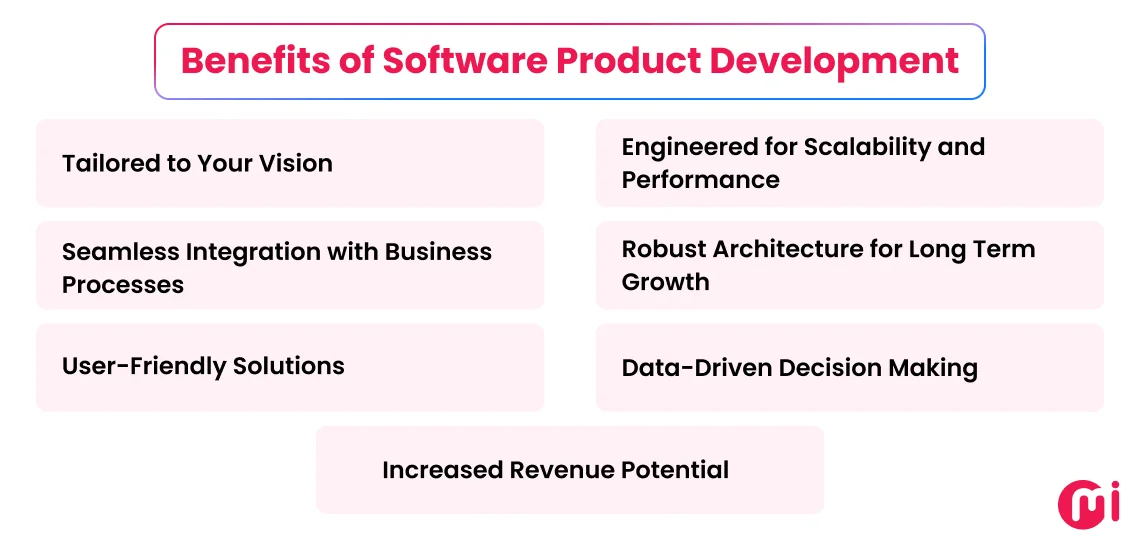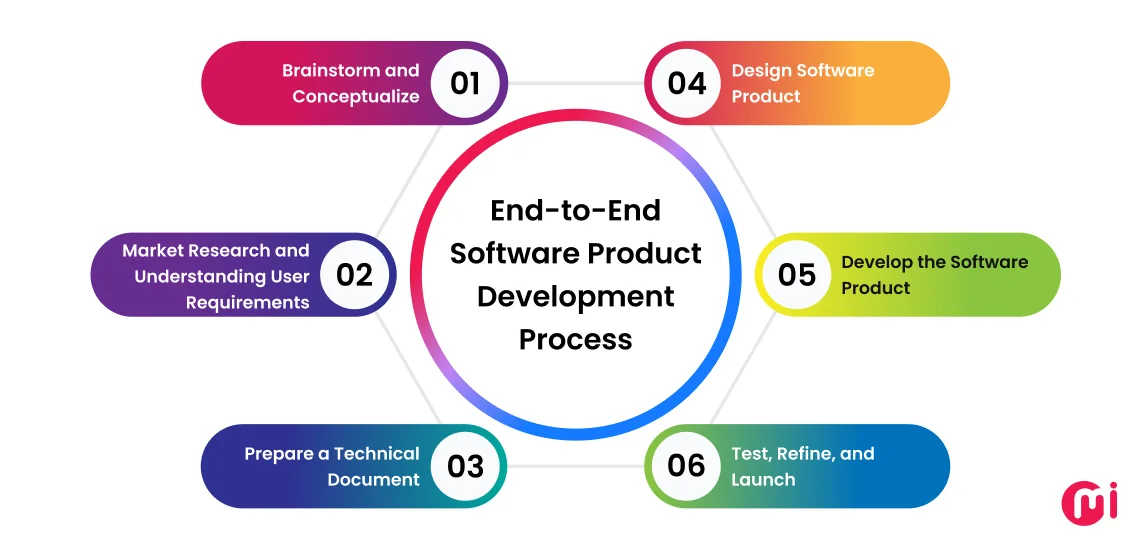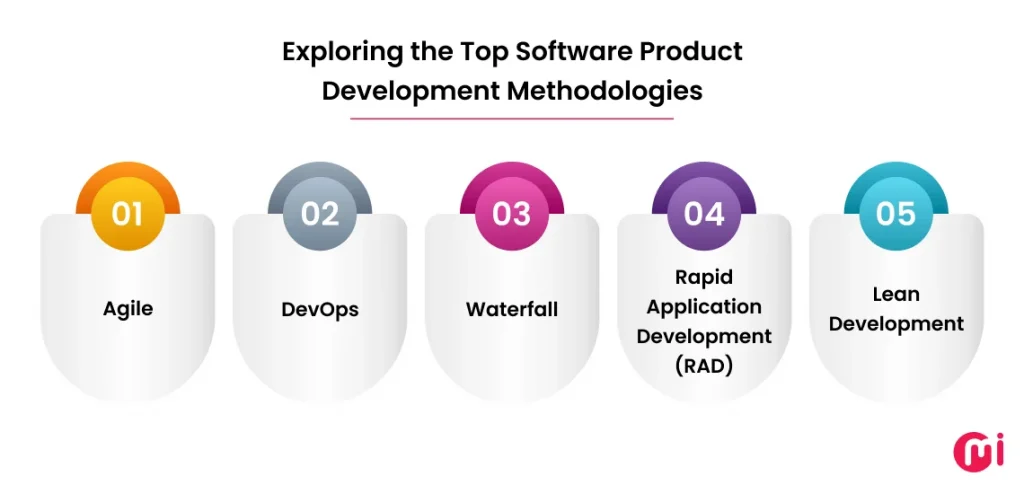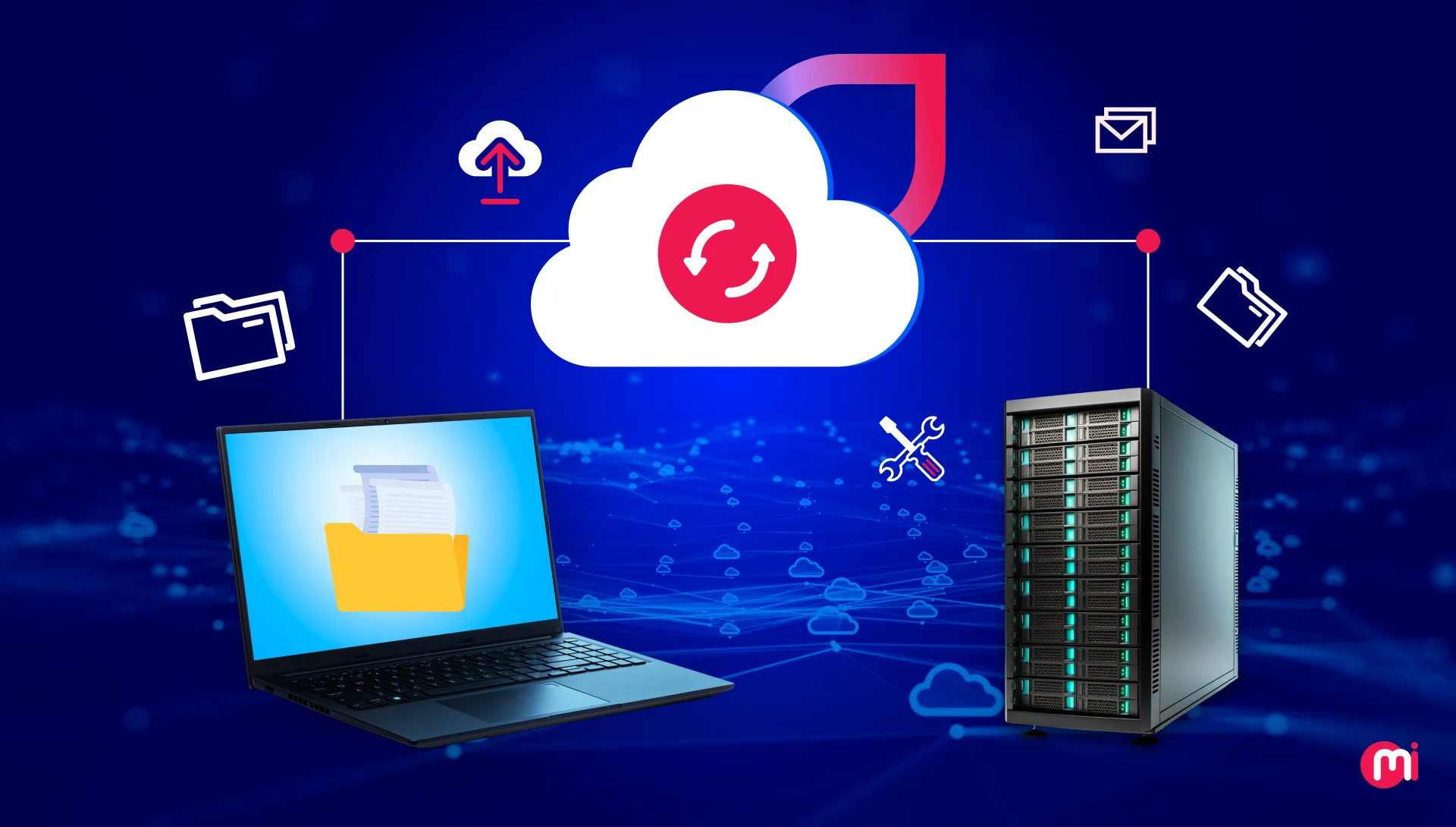Software Product Development Guide for Businesses
- Software
- December 27, 2024
This comprehensive guide walks you through the critical stages of software product development, from idea conception to launch. It highlights key steps such as brainstorming, market research, designing, coding, testing, and refining, ensuring a smooth and successful software product lifecycle. The guide emphasizes the importance of aligning the software product with business objectives and user needs, while also focusing on best practices like agile methodologies and security measures.
Software product development is creating a digital product that meets users’ needs or solves specific problems in a streamlined or systematic way. Software product developers design, build, test, and maintain the product by following structured methodologies, ensuring quality, scalability and usability. But with so many tools, frameworks, and approaches available, how do you choose the right path?
How do you ensure your product sustains the competition and evolving market preferences? And most importantly, how do you build a software product that not only meets your business goals but also delights your users? This guide will answer these questions and more, providing you with a clear strategy and streamlined process to successfully navigate the software product development process from start to finish.

What is Software Product Development?
Software product development is the structured process of creating a scalable, user-focused software solution, from initial idea to market launch and ongoing updates. It involves identifying real user needs, designing intuitive interfaces, building robust functionality, testing for quality and performance, and continuously improving the product post-release. The goal is to deliver high-impact, market-ready software that grows and evolves with user demands.
Benefits of Software Product Development
The global custom software development market is projected to grow at a compound annual growth rate (CAGR) of 22.5% from 2024 to 2030, with revenue anticipated to reach $146.18 billion. On average, businesses that invest in software development have experienced a 20% increase in revenue.
This growth is just the tip of the iceberg. Software product development offers transformative advantages for businesses, driving efficiency, innovation, and customer satisfaction. Here are the key benefits:

1. Tailored to Your Vision
Software product development allows businesses to create custom solutions that meet user needs precisely, enhancing functionality, efficiency, and customer satisfaction. They also empower businesses to achieve a competitive edge.
2. Engineered for Scalability and Performance
Software products are engineered for scalability and designed to handle increasing amounts of work or traffic without compromising performance. As businesses grow, the demand for their systems increases, and scalable software can accommodate this growth efficiently.
3. Seamless Integration with Business Processes
Software products integrate smoothly with existing business operations, streamlining workflows and automating repetitive tasks. It reduces manual efforts and eliminates errors, enhancing efficiency, improving team communication, and ensuring consistency in business processes.
4. Robust Architecture for Long Term Growth
Software products have a robust, adaptable, and reliable architecture that supports growth over time. Businesses can scale and add new features without compromising performance or stability.
5. User-Friendly Solutions
Software products are usually designed while keeping user requirements and experience in mind, making interactions intuitive and straightforward. By prioritizing simplicity and ease of use, the software encourages consistent engagement and improves overall productivity.
6. Data-Driven Decision Making
Using integrated data analytics, businesses can make informed decisions based on data, facts, and real-time insights. This empowers leaders to optimize processes, predict trends, and identify opportunities.
7. Increased Revenue Potential
Software products open new revenue streams and optimize existing ones. By improving efficiency, enabling new services, and offering advanced features, businesses can increase profitability and attract new customers.

Create a Reliable Software Product Development Plan
A well-structured software product development plan is the foundation of a successful product. It defines what needs to be built, why it matters, and how to bring it to life, helping teams stay aligned, efficient, and goal-driven.
Visualize Your Product
Think of products you can build to support your business. Have a product vision that outlines its purpose, target audience and other aspects. This vision acts as a north star, guiding decisions throughout the development process. Take a look at the early objectives and measure outcomes with KPIs or OKRs that drive planning and priortization.
Create a Practical Roadmap
With the vision in place, create a roadmap that translates ideas into actionable steps. This roadmap must have required details about the product and it should have enough flexibility to adapt to changing insights while staying aligned with product goals and user needs.
End-to-End Software Product Development Process
Creating a successful software product is all about strategically navigating through each step of the development lifecycle. From idea conception to deployment and beyond, every phase plays a vital role in shaping the final product. Following are the essential stages of full-cycle product development, making it truly impactful.

1. Brainstorm and Conceptualize
It’s the discovery phase of software product development. In this stage, the initial idea is transformed into a clear and actionable concept. You must work on the software product and try to understand the challenges or opportunities the software aims to address. After this, identify pain points to answer key questions such as:
What issue does the product address?
How does the product deliver unique value or solve problems differently?
What key features and functionalities are essential to the product?
Now, find answers to these questions and shape the software product accordingly. If you are not sure about product features or intent, you can go for MVP development. It will give you a better idea of how your product will look and function. Learn about different types of software development.
2. Market Research and Understanding User Requirements
Deeply understand the challenges or opportunities the software aims to address. This involves identifying pain points, understanding user needs, and analyzing gaps in the current market. Now, analyze competitors’ strategies and look at the downfalls to develop a unique value proposition for the software product. Market research also uncovers challenges or barriers to entry, giving a clearer picture of what it takes to succeed.
Move further and create detailed user personas representing the primary users of the software. These personas involve demographic information, end user goals, challenges, and user behaviors.
3. Prepare a Technical Document
Based on market and user feedback, prioritize the features and functionalities that will deliver the most value. In the technical documentation, provide a concise summary of the research objectives, key findings, and recommendations.
The technical document includes an overview of the market landscape, trends, competitive analysis, user personas, pain points, software product features and functionalities. This document offers actionable recommendations based on the research findings, ensuring the software product aligns with the market needs and user expectations.
4. Design Software Product
Create UX design after understanding the user’s needs, pain points, and goals. It should focus on how users interact with the product and how easily they can complete the task. Partnering with expert UI UX design services ensures that these elements are addressed effectively, enhancing usability and user satisfaction.
Now, design a simple and intuitive user interface (UI) focusing on core functionalities. Create low or high-fidelity wireframes with essential features.
Map the different steps a user will take when interacting with the product to identify potential issues and optimize the experience. You can also turn these high-fidelity wireframes into a clickable prototype by making it intuitive and responsive.
5. Develop the Software Product
The implementation and development stage is where the ideas, designs, and plans come to life. This phase is the backbone of the software product development process, requiring collaboration, technical expertise, and adherence to Software Development Best Practices. Engaging professional software product development services at this stage ensures that your solution is built with scalability, performance, and user experience in mind.
To start with, turn wireframes or prototypes into a fully functional software product using the best product management tools to streamline collaboration and track progress. Implement required functionalities and features, and write clean, efficient, and maintainable code. Combine different modules, APIs, and third-party services to create a seamless system.
6. Test, Refine, and Launch
Conduct rigorous testing, including unit, integration, performance, usability, and security tests. A quality assurance tester in the software development team plays a key role in identifying technical issues, resolving them, enhancing performance, and improving the user experience. After testing, prepare the product for deployment and launch it. Post-launch, continuously monitor and maintain the product for long-term success.
Exploring the Top Software Product Development Methodologies
Different software product development methodologies offer unique approaches to planning, designing, building, and deploying software, catering to varied project needs and team dynamics. Here’s a look at some of the most effective and widely used methodologies in the industry:

1. Agile
Approximately 64% of companies have embraced agile methodologies to enhance software delivery and effectively manage shifting priorities. Agile methodology is flexible and iterative, focusing on delivering small, functional increments of a software product through regular feedback and collaboration. It prioritizes everything, from adaptability to continuous changes and close communication. Agile’s emphasis on teamwork, time-boxed sprints, and continuous improvement makes it ideal for projects where requirements evolve.
2. DevOps
DevOps combines software development (Dev) and IT operations (Ops) to streamline the delivery pipeline and improve efficiency. It emphasizes automation, continuous integration, continuous delivery (CI/CD), and close collaboration between teams. DevOps Solutions ensure faster releases, higher quality products, and greater alignment between development and operational goals, making it a critical approach for modern software engineering.
3. Waterfall
Waterfall is a linear, sequential methodology where each phase of development—requirements, design, implementation, testing, and maintenance—must be completed before moving to the next. This method is ideal for projects with well-defined requirements and minimal expected changes, as it provides a clear roadmap and documentation at every stage.
4. Rapid Application Development (RAD)
RAD prioritizes rapid prototyping and user feedback, enabling teams to develop functional components quickly and iterate based on user input. By focusing on speed and adaptability, RADensures flexibility and quick iterations, making it well-suited for projects where requirements are uncertain or likely to evolve. It emphasizes collaboration and flexibility, ensuring that end products closely align with user needs.
5. Lean Development
Lean development is inspired by lean manufacturing principles, focusing on eliminating waste, optimizing resources, and delivering maximum value to users. This methodology prioritizes efficient workflows, minimal delays, and delivering features based on customer feedback. Lean development aims to streamline processes, reduce costs, and create high-quality software efficiently.

Build Your Product With MindInventory: The Ultimate Software Development Partner
MindInventory delivers reliable software development services that cater to your business’s unique needs, ensuring you stay ahead of the curve. We are your strategic partner in transforming ideas into high-impact software solutions, including ERP software development services, that drive growth and operational mastery. Our expertise spans crafting sophisticated custom software, enterprise-grade solutions, application software, cloud-based platforms, and more.
Whether it’s building Passio, a groundbreaking AI platform redefining technological capabilities, Jetson, an innovative mentorship platform empowering the next generation of entrepreneurs, or Zooop, a robust SaaS-based admin panel streamlining operations for businesses, Mindinventory consistently delivered excellence across diverse industries.
Our ability to adapt to unique project requirements and craft tailored solutions has solidified our reputation as a trusted software product development company for businesses worldwide. We create scalable solutions that evolve with your business, all while ensuring absolute precision, security, and future-readiness.
FAQs on Software Product Development
For simple applications, software development cost may range from $10,000 to $50,000, while more complex projects like enterprise solutions or AI-driven platforms can exceed $100,000 or more. However, the final cost depends on various factors like project complexity, features, team size, technology stack, and location of developers.
The software product development lifecycle is a structured process that includes stages like planning, design, development, testing, deployment, and maintenance. It ensures a systematic approach to creating and maintaining software, from initial idea to final release and updates.
Common tools used in software product development include Jira, GitHub, Visual Studio Code, Selenium, Figma, and Jenkins. These tools help manage projects, track versions, develop and test code, design interfaces, and automate workflows.
Mainly there are five types of software products, including system, application, driver, middleware and programming software. To ensure the software you select meets your business goals, you must invest in the right type of software that suits your business requirements.
The most impactful software development trends include AI-assisted coding, machine learning algorithms integrations, and cloud-native development. DevSecOps enhances security integration, while platform engineering streamlines internal tooling. Edge computing and AR, VR, and MR will redefine user interactions through engaging and interactive digital experiences.













